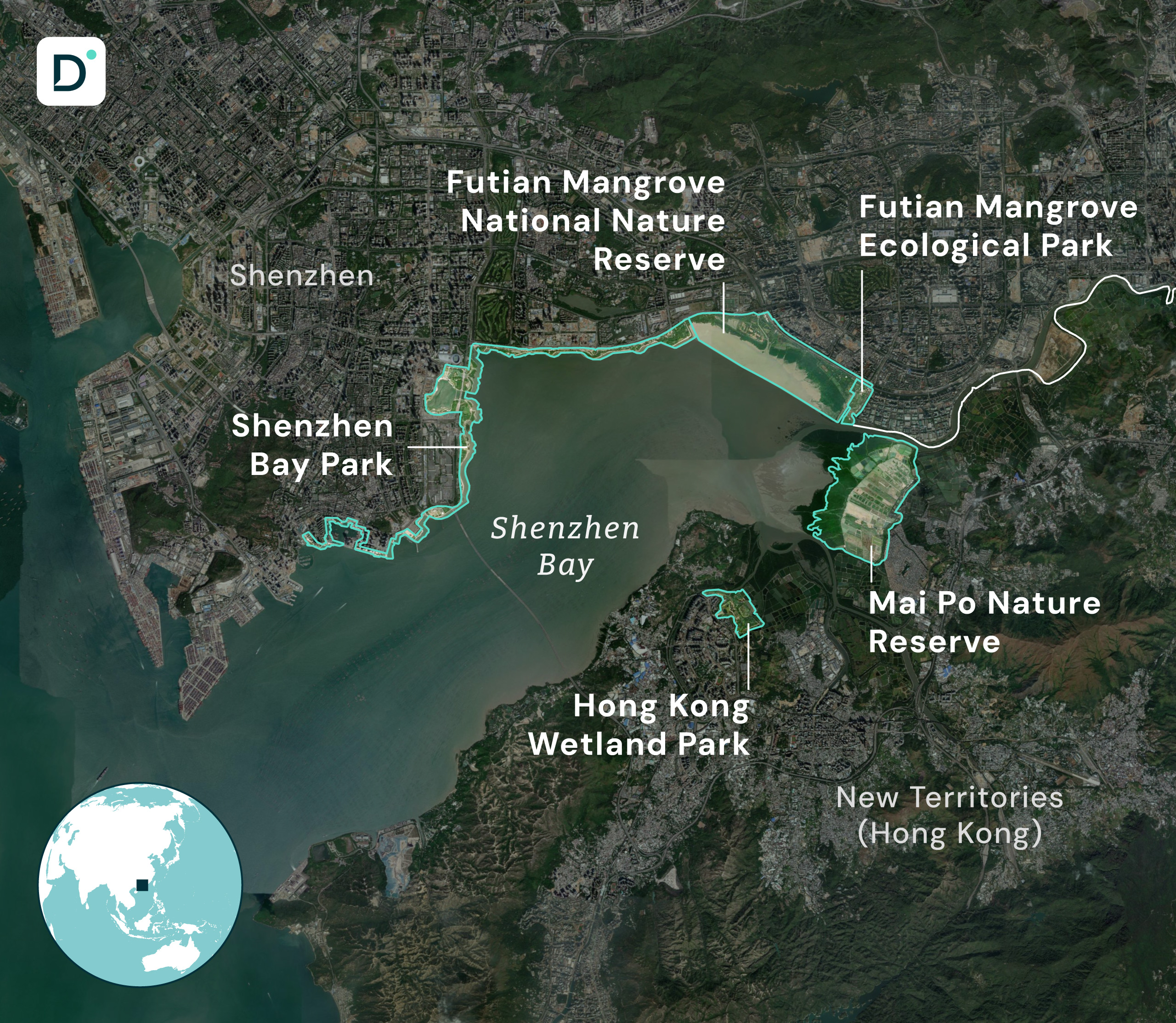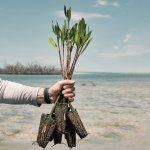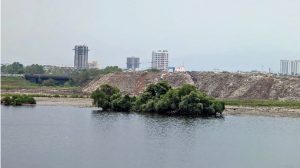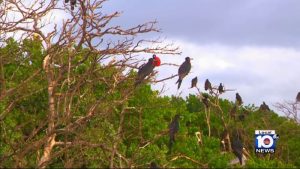Reviving mangroves in China’s cutting-edge city
Mangrove Ecosystem: A Haven for Migratory Birds
Each spring, as Shenzhen’s mangroves burst into life, the region becomes a prime spot for birdwatchers observing the endangered, black-faced spoonbill. Known as the giant panda of birds, this species winters in Shenzhen Bay from October to April, in preparation for its northbound migration. Shenzhen Bay, located in southern China and part of the Pearl River Delta expanding into Hong Kong, is a crucial stop-off point for migratory birds using the East Asian-Australasian flyway. The mangroves support over 200 species of birds and host 100,000 migratory birds each winter, drawing enthusiasts and scientists alike to witness these natural spectacles against the backdrop of one of China’s most bustling urban settings.
Urban Ecological Transformation in Shenzhen
Amid the rapid urbanization that defines modern China, Shenzhen stands out not just for its “futuristic” skyline but also for its efforts to reassert its ecological priorities. After significant mangrove losses due to aggressive development, Shenzhen’s mangrove recovery has been “unprecedented.” This resurgence earned one of its wetlands a designation of international importance under the Ramsar Convention in 2022. The city’s approach to conservation, involving robust policy enforcement and community engagement, illustrates how urban areas can successfully integrate significant ecological habitats, reversing ecological decline in vulnerable delta regions.
Historical Ecological Decline: The Impact of Urbanization
Shenzhen’s transformation from a quaint fishing village in 1979 into a bustling international metropolis epitomizes China’s rapid urbanization. As the country’s first special economic zone, it spearheaded economic reforms, but at a significant environmental cost. Extensive land reclamation for commercial and residential development drastically reduced mangrove habitats to a low of 50 hectares in 1991. The introduction of non-native, quick-growing tree species like Sonneratia apetala intended as a quick fix for mangrove restoration and coastal stabilization resulted in excessive growth and disrupted native biodiversity. This proliferation created destabilizing monocultures, obstructed flood discharge channels, and increased waterlogging, complicating flood management efforts.
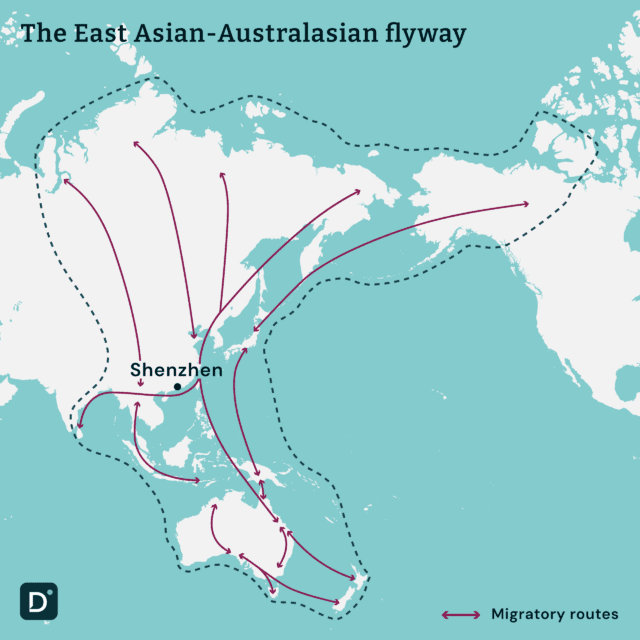
Restoration Efforts and Policies
Shenzhen’s 260 km-long coastline, fortified by mangroves, serves as the first line of defense against climate-related disasters. However, environmental stressors have undermined the coastline’s structural integrity, diminishing the protective role of the mangroves. Typhoon Vicente, which struck in 2012, exposed the city’s vulnerability to natural disasters and set back its regreening program.
Recognizing this vulnerability, the city authorities reversed course in the early 2000s, embracing a strategic approach that included selective tree reduction. Haichao Zhou, an associate researcher at Shenzhen University, serves on the conservation panel that recommended a nature-based restoration plan. This strategy, focused on systematically removing fast-growing invasive species, was recently adopted by the local government.
According to the city’s 2023 environmental report, Shenzhen created 12.72 hectares and restored 13.08 hectares of mangroves in 2022 by selectively cutting fast-growing Sonneratia apetala. Although this resulted in a brief fall in overall mangrove cover, it facilitated the regrowth of native species, enabling them to recolonize the wetlands.
“Through careful management practices such as those adopted in Shenzhen, including judicious thinning, selective logging, and maintaining suitable hydrological conditions, native species can naturally recover, enhancing mangrove diversity,” Zhou told Dialogue Earth.
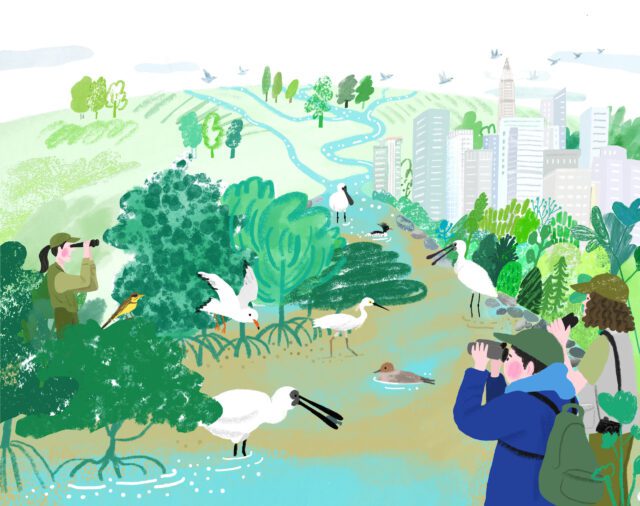
Success of Mangrove Restoration in Shenzhen
Central to Shenzhen’s success in restoring its mangroves is an integrated management strategy, combining a unique governance model with strict regulatory measures. Since 2018, the enforcement of land reclamation bans, which prohibit new coastal reclamations, particularly around mangrove forests, have significantly contributed to their protection.
The 2021 National Wetland Law further bolstered conservation efforts by providing a strong legal framework, which also prohibited unauthorized land reclamation, set “ecological redlines,” promoted mangrove restoration and sustainable use of wetland resources. The law mandates strict penalties for violations and underscores…urban spaces, facilitating bird migration, improving their survival rates and serving as natural barriers against urban encroachment.
Between 2000 and 2022, mangrove cover across Shenzhen Bay expanded significantly from 281.51 to 526.43 hectares, countering the global trend of mangrove loss.
